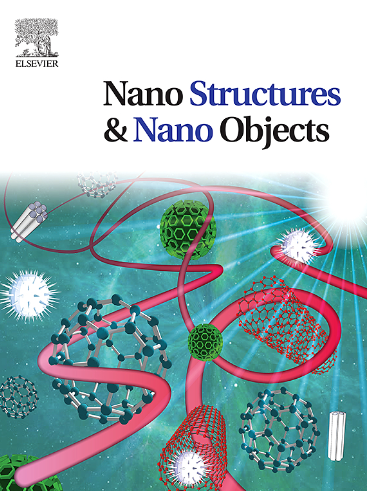Numerical study on thermal radiation and chemical reaction impacts on Prandtl nanofluid flow over a bilinear stretching sheet with heat generation and absorption: Response surface methodology
IF 5.45
Q1 Physics and Astronomy
引用次数: 0
Abstract
The study focuses on the three-dimensional flow of a non-Newtonian Prandtl nanofluid with electrical conductivity, flowing over a bilinear expanding surface within a porous medium. These flows in porous medium are applied in water purification processes, petroleum industries and also chemical factories. The exploration examines various heat and mass transport phenomena, including the consequences of thermal radiation, thermophoresis, Brownian motion, substance response and heat source/sink. The governing partial differential equations are reformulated into a system of nonlinear ordinary differential equations through the application of appropriate similarity transformations. These equations are subsequently solved by using numerical methods bvp4c as well as shooting method. Furthermore, the arithmetical values for the friction factor and the temperature and accumulation constants are provided in tables. It is experiential that the Prandtl fluid constraint enhances the axial and transverse velocities, while the temperature sharing shows an inverse relationship. The temperature and concentration distributions have an opposite attitude with the influence of Brownian motion parameter.
热辐射和化学反应对普朗特纳米流体在双线性拉伸片上产生和吸收热的影响的数值研究:响应面方法
该研究主要关注具有导电性的非牛顿普朗特纳米流体在多孔介质内双线性膨胀表面上的三维流动。这些流动在多孔介质中被应用于水净化过程,石油工业和化工厂。探索考察了各种热量和质量传递现象,包括热辐射、热泳、布朗运动、物质响应和热源/汇的后果。通过适当的相似变换,将控制偏微分方程转化为非线性常微分方程。然后用数值方法bvp4c和射击法对这些方程进行求解。此外,表中还提供了摩擦系数、温度常数和积累常数的算术值。经验表明,普朗特流体约束增强了轴向和横向速度,而温度共享呈反比关系。在布朗运动参数的影响下,温度和浓度分布呈相反的趋势。
本文章由计算机程序翻译,如有差异,请以英文原文为准。
求助全文
约1分钟内获得全文
求助全文
来源期刊

Nano-Structures & Nano-Objects
Physics and Astronomy-Condensed Matter Physics
CiteScore
9.20
自引率
0.00%
发文量
60
审稿时长
22 days
期刊介绍:
Nano-Structures & Nano-Objects is a new journal devoted to all aspects of the synthesis and the properties of this new flourishing domain. The journal is devoted to novel architectures at the nano-level with an emphasis on new synthesis and characterization methods. The journal is focused on the objects rather than on their applications. However, the research for new applications of original nano-structures & nano-objects in various fields such as nano-electronics, energy conversion, catalysis, drug delivery and nano-medicine is also welcome. The scope of Nano-Structures & Nano-Objects involves: -Metal and alloy nanoparticles with complex nanostructures such as shape control, core-shell and dumbells -Oxide nanoparticles and nanostructures, with complex oxide/metal, oxide/surface and oxide /organic interfaces -Inorganic semi-conducting nanoparticles (quantum dots) with an emphasis on new phases, structures, shapes and complexity -Nanostructures involving molecular inorganic species such as nanoparticles of coordination compounds, molecular magnets, spin transition nanoparticles etc. or organic nano-objects, in particular for molecular electronics -Nanostructured materials such as nano-MOFs and nano-zeolites -Hetero-junctions between molecules and nano-objects, between different nano-objects & nanostructures or between nano-objects & nanostructures and surfaces -Methods of characterization specific of the nano size or adapted for the nano size such as X-ray and neutron scattering, light scattering, NMR, Raman, Plasmonics, near field microscopies, various TEM and SEM techniques, magnetic studies, etc .
 求助内容:
求助内容: 应助结果提醒方式:
应助结果提醒方式:


